HPV upregulates MARCHF8 ubiquitin ligase and inhibits apoptosis by degrading the death receptors in head and neck cancer
- PMID: 36867660
- PMCID: PMC10016708
- DOI: 10.1371/journal.ppat.1011171
HPV upregulates MARCHF8 ubiquitin ligase and inhibits apoptosis by degrading the death receptors in head and neck cancer
Abstract
The membrane-associated RING-CH-type finger ubiquitin ligase MARCHF8 is a human homolog of the viral ubiquitin ligases Kaposi's sarcoma herpesvirus K3 and K5 that promote host immune evasion. Previous studies have shown that MARCHF8 ubiquitinates several immune receptors, such as the major histocompatibility complex II and CD86. While human papillomavirus (HPV) does not encode any ubiquitin ligase, the viral oncoproteins E6 and E7 are known to regulate host ubiquitin ligases. Here, we report that MARCHF8 expression is upregulated in HPV-positive head and neck cancer (HNC) patients but not in HPV-negative HNC patients compared to normal individuals. The MARCHF8 promoter is highly activated by HPV oncoprotein E6-induced MYC/MAX transcriptional activation. The knockdown of MARCHF8 expression in human HPV-positive HNC cells restores cell surface expression of the tumor necrosis factor receptor superfamily (TNFRSF) death receptors, FAS, TRAIL-R1, and TRAIL-R2, and enhances apoptosis. MARCHF8 protein directly interacts with and ubiquitinates the TNFRSF death receptors. Further, MARCHF8 knockout in mouse oral cancer cells expressing HPV16 E6 and E7 augments cancer cell apoptosis and suppresses tumor growth in vivo. Our findings suggest that HPV inhibits host cell apoptosis by upregulating MARCHF8 and degrading TNFRSF death receptors in HPV-positive HNC cells.
Copyright: © 2023 Khalil et al. This is an open access article distributed under the terms of the Creative Commons Attribution License, which permits unrestricted use, distribution, and reproduction in any medium, provided the original author and source are credited.
Conflict of interest statement
The authors have declared that no competing interests exist.
Figures


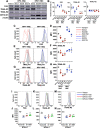
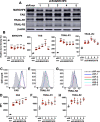
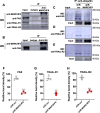
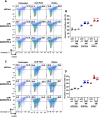

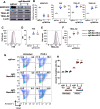


Similar articles
-
The membrane-associated ubiquitin ligase MARCHF8 stabilizes the human papillomavirus oncoprotein E7 by degrading CUL1 and UBE2L3 in head and neck cancer.J Virol. 2024 Feb 20;98(2):e0172623. doi: 10.1128/jvi.01726-23. Epub 2024 Jan 16. J Virol. 2024. PMID: 38226814 Free PMC article.
-
The membrane-associated ubiquitin ligase MARCHF8 stabilizes the human papillomavirus oncoprotein E7 by degrading CUL1 and UBE2L3 in head and neck cancer.bioRxiv [Preprint]. 2023 Nov 4:2023.11.03.565564. doi: 10.1101/2023.11.03.565564. bioRxiv. 2023. Update in: J Virol. 2024 Feb 20;98(2):e0172623. doi: 10.1128/jvi.01726-23. PMID: 37961092 Free PMC article. Updated. Preprint.
-
The membrane-associated ubiquitin ligase MARCHF8 promotes cancer immune evasion by degrading MHC class I proteins.bioRxiv [Preprint]. 2024 Dec 6:2024.11.29.626106. doi: 10.1101/2024.11.29.626106. bioRxiv. 2024. PMID: 39677690 Free PMC article. Preprint.
-
HPV DNA, E6/E7 mRNA, and p16INK4a detection in head and neck cancers: a systematic review and meta-analysis.Lancet Oncol. 2014 Nov;15(12):1319-31. doi: 10.1016/S1470-2045(14)70471-1. Epub 2014 Oct 16. Lancet Oncol. 2014. PMID: 25439690
-
What has the study of the K3 and K5 viral ubiquitin E3 ligases taught us about ubiquitin-mediated receptor regulation?Viruses. 2011 Feb;3(2):118-131. doi: 10.3390/v3020118. Epub 2011 Jan 28. Viruses. 2011. PMID: 22049306 Free PMC article. Review.
Cited by
-
Viral oncogenesis in cancer: from mechanisms to therapeutics.Signal Transduct Target Ther. 2025 May 12;10(1):151. doi: 10.1038/s41392-025-02197-9. Signal Transduct Target Ther. 2025. PMID: 40350456 Free PMC article. Review.
-
The membrane-associated ubiquitin ligase MARCHF8 stabilizes the human papillomavirus oncoprotein E7 by degrading CUL1 and UBE2L3 in head and neck cancer.J Virol. 2024 Feb 20;98(2):e0172623. doi: 10.1128/jvi.01726-23. Epub 2024 Jan 16. J Virol. 2024. PMID: 38226814 Free PMC article.
-
Further Characterization of the Antiviral Transmembrane Protein MARCH8.Cells. 2024 Apr 17;13(8):698. doi: 10.3390/cells13080698. Cells. 2024. PMID: 38667313 Free PMC article.
-
Human papillomavirus integration induces oncogenic host gene fusions in oropharyngeal cancers.Cancer Discov. 2025 May 14:10.1158/2159-8290.CD-24-1535. doi: 10.1158/2159-8290.CD-24-1535. Online ahead of print. Cancer Discov. 2025. PMID: 40358390
-
The emerging roles of MARCH8 in viral infections: A double-edged Sword.PLoS Pathog. 2023 Sep 14;19(9):e1011619. doi: 10.1371/journal.ppat.1011619. eCollection 2023 Sep. PLoS Pathog. 2023. PMID: 37708148 Free PMC article. Review.
References
Publication types
MeSH terms
Substances
Grants and funding
LinkOut - more resources
Full Text Sources
Other Literature Sources
Medical
Research Materials
Miscellaneous

